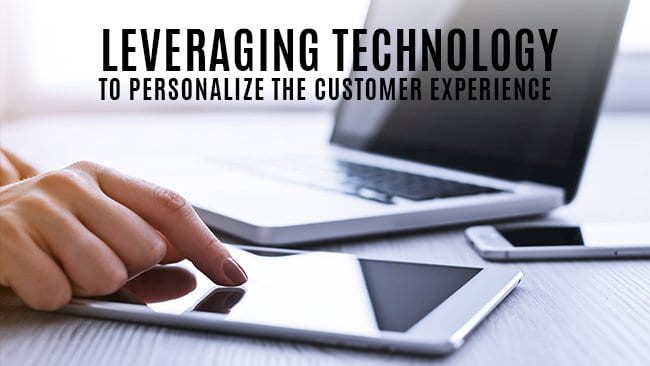
Treating customers as individuals is not as hard as it may seem, provided you implement the right technologies into your center to enable such personalization.
Consumers inevitably have high expectations with regard to customer service, but in a world of multiple channels of contact, delivering a truly personalized service takes a lot of effort. In the first part of this blog, we discussed the importance of providing personalized service to the customer and ways that organizations could go about achieving this. In this second part, let’s take a closer look at the technologies that can be implemented to enable a more personalized customer offering.
A genuinely personalized service goes much deeper than simply being able to greet individual customers by name, although this is obviously the first step. However, what customers really want is to be able to sail smoothly through whatever query or challenge prompted them to contact your center in the first place, and in order to achieve this, you need to be able to provide your agents with their complete history immediately.
From a technology point of view, the first step then is to utilize a customer relationship management (CRM) platform to deliver the kind of integration that provides total visibility. If you ensure that your agents can instantly access the caller’s history, it will enable them to demonstrate a keen understanding of the client’s needs from the outset. CRM integration is what is necessary to achieve this.
Personalized Customer Service With An Multichannel
Multichannel customer service is equally vital, as consumers should have the choice of what channel to use when interacting with your contact center. Remember that customers from different age groups and even different regions will prefer certain channels over others, so ensuring you have true multichannel customer service will enable them to interact with your agents by their preferred method, regardless of whether it is voice, online or even social media.
Tracking software will allow you to follow and understand your customer’s recent website activity. If you then link this information to the agent, they will be able to immediately see what the client has been viewing on your website. Couple this with screen sharing technology and your agent will be able to demonstrate alternative products to the client, or indicate details on their web screen.
Intelligent routing is critical if you aim to get the consumer to the right place as quickly as possible. In conjunction with call line identity (CLI) recognition, you can use routing technology to send the call through to the selfsame agent the caller spoke to on a previous occasion, allowing you to deliver a much more personalized experience, as said agent will already know all they need to know about the client from the start of the call.
Assist Agents to Personalize Customer Service:
CLI recognition can also assist your agents to greet individual customers by their preferred name, be that the more formal Mr ‘X’ or ‘sir,’ or instead by their first name or even a snappy nickname. And if it is a new customer, the software can enable the agent to choose a greeting ‘style’ to be used for all further interactions with that customer.
Prompts can also be attached to individual customer profiles, explaining to agents the particular telephone manner most suitable for a particular client. Some customers may prefer to converse in a formal style, while others respond better to a colloquial and friendly epithet. Individual customer’s CLIs can indicate the correct manner to be used in each instance.
If part of your dealings with consumers entails taking card payments or processing orders, ensure that you keep agents on the line at all times by using a PCI-compliant solution. In this way, the agent remains available to assist if required, and the customer isn’t shunted over to an automated system, losing their human contact and the personal touch that goes with it.
While no one likes to be put on hold, it is sometimes necessary. However, even in such instances, you can implement in-queue personalization software that allows you to provide customers with tailored announcements, information or music, while they are waiting. It’s a lot more personal than repeatedly being forced to listen to a robotic voice intoning ‘your call is important to us, please hold,’ or some variant thereof.
Emerging Technology on Personized CX
Technology can also serve as an enabler for empowering your front-line staff. The cloud has brought a wide range of sophisticated features within reach of contact centers of all sizes and budgets. It can thus give your people the flexibility they need to be able to adapt and keep pace with shifting customer preferences. Another way of empowering agents is to utilize dynamic scripting tools, which will help to guide them through the many complex customer interactions they will have to undertake with the knowledge and empathy that is so necessary if you want to build long-term customer loyalty.
Don’t forget that although you are highly focused on personalizing the customer experience, sometimes they want a simple answer to a simple question, so make sure that they have access to self-service tools as well. With data-directed intelligence, it is quite possible to help some customers without the need to connect them to a human being. For example, if a client has a simple query about an order, they can be directed to enter their order number and will then receive a personalized message detailing the date of shipping and when the delivery is expected to arrive.
Technology can also assist you to maintain an ongoing profile of the customers your agents speak to. If you track all engagements with customers, this knowledge – which could include knowing their latest purchases, as well as their recent complaints – will enable your center to deliver a truly personal experience. After all, agents will then be able to converse with the client with in-depth knowledge and will be able to discuss in a social manner the customer’s journey, ensuring that previous complaints have been dealt with and asking how much the customer has enjoyed using other products supplied by your company.
This creates a more enjoyable experience for the customer all round, as it indicates that you are aware of their dealings with you, as well as their complaints and that you are concerned about their specific wellbeing – you are not treating them as just another number. It is this kind of approach that will keep your clients coming back to you.
Increase Customer Satisfaction
Finally, you can use the technology in place to do something your customers will not expect, such as posting them a birthday card (don’t, however, simply send them a standard SMS – this is entirely impersonal and at odds with what you are trying to achieve), sending them a coupon for their next purchase or even a box of chocolates to reward them for their input. This is the ideal way to round out the personalized customer experience – reward them when they don’t expect it and this, added to the rest of the personal approaches already detailed, will help you to exceed their expectations, distinguish your brand and vastly increase customer satisfaction, which will, in turn, lead to customer retention and loyalty.
[About the author]

)
